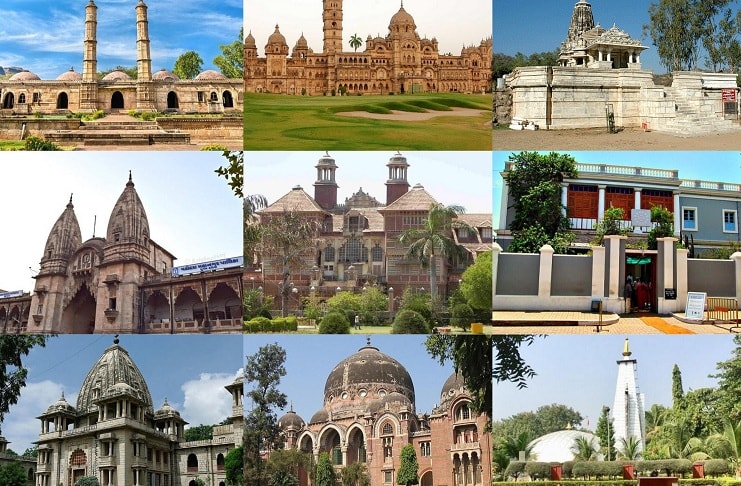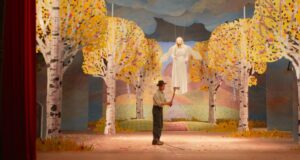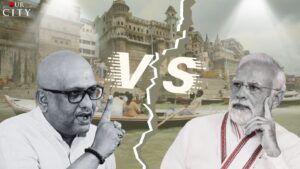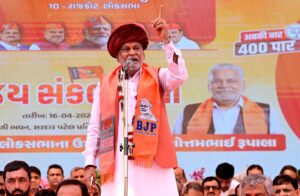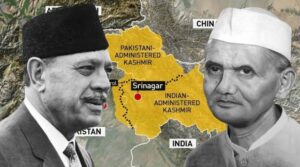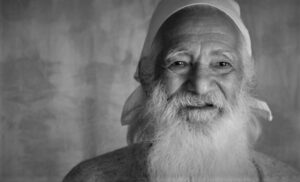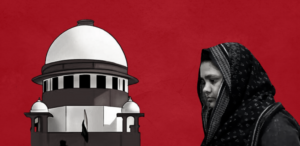The frown, the smile, the sorrow, the worry, those little figures, and faces have it all. We are not talking about the Padmapani and Vajrapani from the walls of Ajanta, but the forms painted on the walls of the monuments of Vadodara. Over 80 monuments in the city have breathtaking murals, half of which require special attention. Due to its central geographical location, travelers have always dropped into the city since time immemorial and have mingled their culture with that of the local culture. Art is also not an exception. We find a variety of styles which include the Sultanate style, Mughal style, Maratha style and many other schools of painting have made their presence felt on these walls.
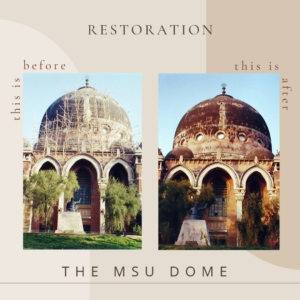 “We have over 5000- 6000 murals present on the walls of the city’s monuments,” says Chandrashekhar Patil, Art Conservator. These murals have been made using different techniques and materials; Mosaic, stucco, fresco, seco, tempera, and stained glass being a few. Tracing the history of these murals is as interesting as the murals themselves. These can be dated back to 2000 years, though the major work of restoration has been done during the time of Sir Sayajirao Gaekwad III. City houses one of the best Fine Arts College which furthered this art and has included murals in their curriculum.
“We have over 5000- 6000 murals present on the walls of the city’s monuments,” says Chandrashekhar Patil, Art Conservator. These murals have been made using different techniques and materials; Mosaic, stucco, fresco, seco, tempera, and stained glass being a few. Tracing the history of these murals is as interesting as the murals themselves. These can be dated back to 2000 years, though the major work of restoration has been done during the time of Sir Sayajirao Gaekwad III. City houses one of the best Fine Arts College which furthered this art and has included murals in their curriculum.
Sadly, the number of murals have been ruined and cease to exist due to the new buildings coming up in the city. There are many, which have been documented while there are many more which are yet to be documented and are craving for restoration. “I have restored the murals of Khanderao Temple, Vitthalnathji Temple, Kamnath Mahadev Temple, Narsi Ji Temple, and the list continues,” confirms Patil. Not just the Hindu temples, even the mosques, and makbaras have beautiful artwork present on the walls, ceilings as well as floors. Waris Shah and Bachha Jamdars’ Makbara are a few which have been restored.
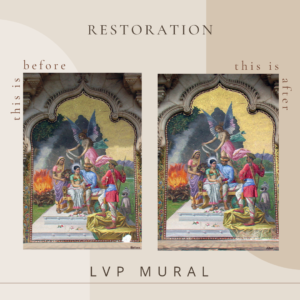 It is said that Vadodara had about 200 pols at one point of time. It houses the beautiful ootlas, chowks and chabutras which have beautiful murals. Mama ni pol is one such pol where few murals have been restored. Apart from the pols, there are also many Jain Derasars where one would find the murals and manuscripts which are yet to be attended. The entire Warashiya Talav corridor, the
It is said that Vadodara had about 200 pols at one point of time. It houses the beautiful ootlas, chowks and chabutras which have beautiful murals. Mama ni pol is one such pol where few murals have been restored. Apart from the pols, there are also many Jain Derasars where one would find the murals and manuscripts which are yet to be attended. The entire Warashiya Talav corridor, the
unidentified 14th-century monument at Bagikhana, and the 15th-century Navlakhi Vavs’ murals remain unnoticed and unattended.
A humongous amount is allotted by the union as well as the state budget for heritage preservation. Over 1102.83 crore has been allocated by the union government to the Archeological Survey of India (ASI) for the protection and conservation of centrally protected sites and monuments in the recent budget while 10,000 crores have been allocated for heritage as well as eco-tourism development in Gujarat budget. Where does such a huge amount go? “We need an immediate change in the government policies. ASI barely uses the fund. Another drawback is, they can utilise funds only for the ASI-protected monuments! What about the ones which are yet to be documented, but need special attention,” says Patil. He further suggests that the government needs to allow private players to utilise the allotted fund. Though he appreciated the efforts of the government and considered it a rare incident of receiving advance amounts for restoring paintings and the house of Mahatma Gandhi.
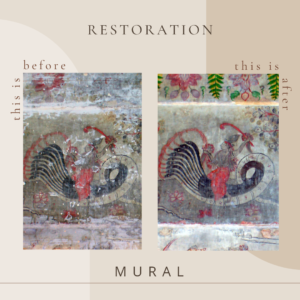 Murals are doorways to our rich cultural history and it is our duty to protect them and bring awareness to delve into the rich world of their existence on the Heritage Day.
Murals are doorways to our rich cultural history and it is our duty to protect them and bring awareness to delve into the rich world of their existence on the Heritage Day.

